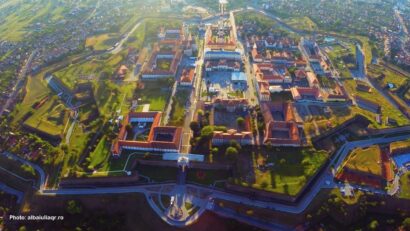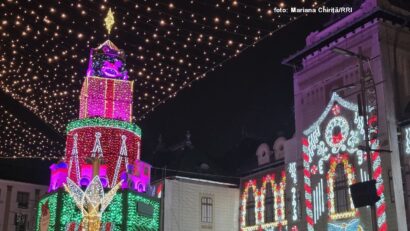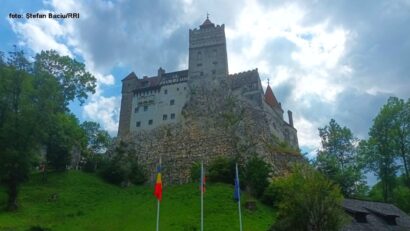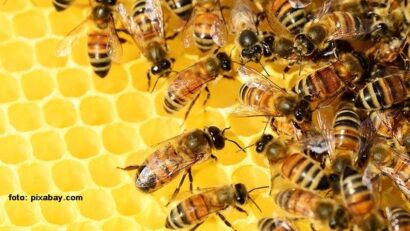Tourism in Tarcu Mountains
Aurochs are being reintroduced in Romania's Southern Carpathians

România Internațional, 29.09.2016, 13:27
In the west of the Southern Carpathians, in Tarcu Mountains, an area has been identified that is suitable for reintroducing into the wild the auroch, a species that has disappeared from these lands over two centuries ago. The auroch has always been a symbol of strength and independence, which is why they are prominent on the coat of arms of the former kingdom of Moldavia, in what is now eastern Romania.
Three years ago, WWF Romania and Rewilding Europe started a project to repopulate the Carpathians with this emblematic species. At present, at the foot of Tarcu Mountains, 10 aurochs have been brought in from all over Europe, in an area set aside for acclimatisation. Another 20 aurochs roam freely in the local mountains and hills. In the village of Armenis, where the auroch corrals are, the locals have set up the Auroch Grove Association, and started offering tourists travel packages that include guided tours in the wild, to watch aurochs in their new natural habitat. Oana Mondoc, project manager, gave us details:
Oana Mondoc: “Tourists can watch the aurochs in the wild, accompanied by our rangers or expert guides. We have experience in finding out where the aurochs are, because they have GPS collars, they are monitored by satellite. We also track the aurochs on the ground, so that tourists can watch them at leisure, and not simply catch a glimpse of them and get a snapshot. The trip takes at least 4 or 5 hours, during which tourists get to see the aurochs in their natural habitat, while at the same time enjoying other aspects of the environment, such as the wide variety of plants. This is an educational and learning experience.
Recently, a Visitor Centre was set up in Armenis, where tourists can get information on the aurochs. Data was collected in the field so that visitors can see how they live, with the help of technology. Cameras have been set up in the wild, broadcasting images as soon as an auroch passes by. The centre, a gateway into the world of the auroch, offers visitors not only interactive educational games and holograms of the animals in their habitat, but also local products made by local craftsmen.
Oana Mondoc: “We have set up a number of installations, each showcasing part of our monitoring activities. We have a hologram that shows auroch behaviour in the wild, describing a regular day in their life. Then we have an interactive game involving food chains, where visitors can reconstitute the food chain based on images from the monitoring cameras we have in the area. Then we have a third installation, a device that demonstrates the impact of aurochs on the ecosystem. It shows what happens when they cross certain habitats, and what species benefit from their existence.
The village of Plopu, which is part of Armenis, has lots of abandoned dwellings. They will be refurbished to accommodate tourists, as part of a project run by the local town hall in collaboration with WWF Romania.
Oana Mondoc: “We noticed that there are dwellings in these extraordinarily picturesque areas that have not been used in decades. They were used as summer homes by the villagers raising farm animals. When you go up to Plopu you find incredible sights. So, together with the local authorities, we realized that this was an ideal area for tourists, and we plan to build a holiday village. We want to refurbish some stone dwellings and organize activities around them, close to nature. In addition to the restoration in itself, we want to get the locals involved in popularising traditional crafts like baking bread or picking fruit.
The forests in the Banat area are starting to fill up with aurochs once again. These giants help bring villages back to life by attracting tourists, who in turn have an opportunity to get to know local occupations, local delicacies, and traditional crafted objects. Oana Mondoc told us what else the area has to offer:
Oana Mondoc: “Auroch watching involves several hours of tracking. The visit ends with a traditional picnic served by a local family. This is not a short visit. You have to make reservations well in advance. We’ve had tourists from Romania, but also from Germany, Belgium, Serbia or Switzerland. In addition to auroch watching, we have a 3 to 4-day program for watching bears in a neighbouring area. This is the Rusca protected area, where we have a partnership with the Teregova Forest Range Office, which has arranged special places for bear watching and expert guides. You can also take leisurely walks in the forest, in areas where sometimes you can see chamois. In addition, we have an evening spent in safari tents. The sounds of the wild at night are truly special, and you can admire the setting and rising of the sun. You can make reservations with our organization. You can also go on photo tours with expert photographers. This is a special tourist experience, which enables you to observe, appreciate and understand nature in peace. The maximum number of tourists in a group is four.
The auroch is the largest European mammal, weighing up to 1,000 kg, with a height of over 1.9 meters. In the past it lived all across the continent, with the exception of some areas of Spain, Italy, and the north of Scandinavia. Nowadays, a little over 3,000 are left in the entire world. Romania is one of the 9 European countries with free-range aurochs.
(translated by: Calin Cotoiu)






























